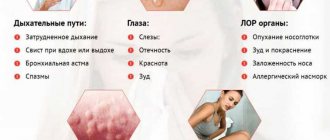Rosehip oil, whose properties and uses are unique like berries, deserves special attention. The study of the medicinal properties of this product began at the end of the 19th century, and even then significant results were obtained. With the development of technology, new ways to preserve youth have appeared, but the old proven remedy does not lose its popularity. In fact, a natural extract from the seeds of a medicinal plant has a minimum of side effects, and the result can be compared with salon facial and body care. Is it really time to pay attention to this interesting tool or should someone just pass by?
Dog-rose fruit
Short story
Rosehip has grown for thousands of years in various countries of the world, and people have known its miraculous properties since ancient times. The seeds of the fruit, rich in vitamin C, also contain vegetable oil that can uniquely restore the skin. History knows exactly when exactly people learned to isolate it, but the first scientific studies were carried out at the end of the 19th century.
Through clinical trials, scientists have obtained evidence that the product effectively fights wrinkles, pigmentation and other skin problems. Since then, interest in such a valuable product has not waned.
What it is
Rosehip oil is a product of cold pressing of seeds located inside the fruit of the plant, less often - extraction with organic solvents or alkalis. The most useful is considered to be pressed, since the use of solvents does not have the best effect on the composition.
Base oil is not cheap, since the rose hips used to obtain it are not the same as those that grow everywhere in our country. For cold pressing, seeds of bushes that grow in South America and Europe, the southern regions of our country, are used.
Under the general name “rosehip oil” there are three possible extracts:
- mosquito roses, in Latin “ Rosa mosqueta ”, grows in Europe, Asia Minor, CIS countries, Crimea, Saratov and other cities of Russia, also called “rusty or brown rose hips”;
- rusty rose, name in Latin “ Rosa rubiginosa ”, growing area similar to rose moschete;
- Canina rose, canine rose, or canine rose, in Latin “ Rosa canina ”, grows in Europe, the northern part of the African continent, in Asian countries and states located in South America.
Regardless of the type of raw material, seed extracts are very similar in composition and, accordingly, properties.
According to its intended purpose, rosehip oil is divided into:
- cosmetic – intended for external use, may contain undesirable impurities, prohibited for internal use;
- food grade – the highest quality, suitable for external purposes and internal use, universal;
- pharmacopoeial - meets the requirements of the State Pharmacopoeia of the Russian Federation, possible methods of use are determined by the degree of purity, so you should focus on the manufacturer’s instructions.
Description:
- consistency – light, fluid;
- quickly absorbed into the skin;
- transparent, without sediment and possible turbidity;
- smell – characteristic of the plant, faintly perceptible;
- taste – specific, with sour and bitter notes, weakly expressed;
- shade - from golden to reddish tones, and even brown, saturation is determined by the type of raw material and the method of obtaining fat.
Such characteristic features indicate the richness of the unsaponifiable fraction in biologically active substances. The extract is often falsified, for which synthetic additives are used.
Composition of rosehip oil
We already wrote above that the composition of the oil, regardless of the type of raw material used (three types of rose hips), is almost identical, but, nevertheless, differs significantly from other bases. It is easily absorbed, relieves inflammation, and all thanks to a special combination of components. For this reason, this section of the article deserves no less attention than the rest.
The composition of the unsaponifiable fraction includes:
- carotenoids – restore tissue integrity;
- lycopene – antioxidant;
- trans-retinoic acid – relieves skin inflammation, is effective in combating hair loss, restores the structure of the hair shafts;
- ascorbic acid, vitamin C, an antioxidant, stimulates collagen synthesis, thereby maintaining youth and lightening pigmentation.
The fatty acid composition is given in the table:
| Triglycerides | Fatty acid | Percent, % |
| Saturated | Stearic Palmitic | 1,5 up to 3.0 |
| Monounsaturated | Oleic (omega-9) | 13,0 – 15,0 |
| Polyunsaturated | Linoleic (omega-6) Linolenic (omega-3) | up to 50.0 33,0 – 35,0 |
*General information is provided to understand the difference between oils. Exact data must be found on the product label.
The unsaponifiable fraction contains a small amount of vitamin E, a natural preservative, which indicates a short shelf life. To ensure that the composition retains its properties longer, manufacturers additionally introduce tocopherol in a concentration of no more than 0.5%.
Saturated fatty acids have an immunostimulating effect. Their low content indicates a low solidification temperature and liquid consistency at room conditions. Oleic acid retains moisture in the skin and hair and ensures rapid absorption.
Omega-3, omega-6 and omega-9 together slow down aging. Unsaturated fatty acids relieve inflammation and strengthen the walls of blood vessels.
For facial care, cosmetologists select a combination of fatty acids, taking into account the skin type. In general, oleic should be 1.5 times less than linoleic, linolenic - 10 times less than linoleic. No oil meets this requirement, but this one is suitable for dermis that is too dry, sensitive, problematic or prone to age-related changes. Without these problems, use in its pure form may not only fail to produce results, but also lead to clogged pores.
Properties of rosehip oil
Use of rosehip oil for treatment
The use of herbal medicines, even with the best characteristics, cannot serve as the main way to combat diseases. It is necessary to take medications prescribed by a doctor. However, infusions, decoctions, and extracts of natural raw materials are recognized as excellent auxiliary, strengthening, and supporting agents.
ENT pathologies
It is easy to get rid of a runny nose or rhinitis if rosehip oil (preferably diluted) is dripped into the nose. Another option is to soak cotton pads in it, place it in the nostrils for 3-5 minutes and lie down for this time. The second option is preferable. When fighting sinusitis, the number of approaches is increased to 6-8 times in 24 hours. The inflamed cavities should be cleaned first; the anti-inflammatory effect will be more pronounced.
Upper respiratory tract infections such as sore throat or pharyngitis go away faster after regular (three times a day) gargling. Take 1 tbsp. l. pure product should not be swallowed, as there is a high risk of problems with the gastrointestinal tract, especially the pancreas. To be on the safe side, it is allowed to lubricate the mucous membrane using a tampon on a long stick.
For diseases of the stomach and intestines
The product helps fight gastritis, accompanied by decreased secretion. You need to drink it 1 teaspoon about half an hour before meals for 21 days in a row. Damaged mucous membrane regenerates faster, pain decreases, inflammation is relieved. Ulcerative colitis is additionally treated with enemas. Instructions for use: 50 ml of oil, heated to body temperature, should be injected into the anus at night.
For skin lesions
Rapid regeneration is achieved using a sterile napkin. It must be soaked in oil and applied to the area requiring treatment (burnt, frostbitten). Secure with a bandage, change 1-2 times a day until recovery occurs. This principle is used to prepare compresses: a damp cloth is additionally covered with wax paper. The goal is to remove trophic ulcers and bedsores.
Another indication is dermatitis. Treatment is comprehensive. Sore spots need to be covered with applications - “paint” the skin twice or thrice a day for half an hour, drawing lines with a cotton swab. At the same time, drink 1 teaspoon of oil every 24 hours (it is not advisable to replace it with tincture). For eczema, 10 ml of fruit pomace is added to 5 drops of lavender, a napkin is moistened in the mixture and applied to the affected areas.
Nursing mothers get rid of cracked nipples this way - wet gauze should be kept at the breast for a week for 30 minutes after each feeding (do not bring the baby closer to you during this time). Use pure blackthorn extract. By the way, if you massage it, stretch marks disappear within a month.
For gum health
Medical treatment of gingivitis or stomatitis cannot be supplemented with traditional methods - drop essential oil onto a cotton pad 4 times a day and gently lubricate the sore spots. At the same time, it is easy to remove bleeding and bad breath. In the first case, you need to take tea from linden petals with oak bark, into which 20 g of thorn pomace is poured, to rinse the throat and larynx.
Gynecology
Thanks to its strong bactericidal and regenerating effect, the organic product helps to safely and easily get rid of cervical erosion and thrush. They treat cervicitis and endometritis with it, and sometimes more effectively than traditional official methods. Methodology: douching, insertion of tampons. The mode and terms of use are indicated by a specialist.
Childhood diseases
Blackthorn squeeze is used if it is necessary to cure a teenager, strictly according to the instructions of the therapist. It is allowed to consume 2.5 ml a maximum of three times a day. Pregnant and breastfeeding women should use highly active wild rose seed extract externally only. Contact with mucous membranes is unacceptable.
DETAILS: Psoriasis on the face: photo, initial stage
Properties
The medicinal properties of rosehip oil were studied back in the 19th century and consist in the ability to accelerate the process of cellular regeneration, thereby restoring the integrity of the skin. It acts as a real first aid in the fight against early signs of aging, scars, scars, age spots, wounds, cuts, burns, inflammations.
Distinctive characteristics of rosehip oil:
- relieves inflammation and swelling;
- has an antimicrobial effect;
- when used internally, it is worth considering the choleretic effect.
Such features distinguish the product from a number of base oils.
"Liquid Sun" as a medicine
The healing properties of rosehip oil have been known since ancient times. Of course, for serious illnesses it should not be used as the main treatment, but as an auxiliary, supporting and strengthening agent, this product can be very useful.
From ENT pathologies
Since ancient times, people have successfully fought rhinitis with rosehip oil. Over the years, this method of treatment has not lost its relevance. To get rid of a runny nose, it is enough to instill rosehip oil into the nasal passages 2-3 times a day. It is optimal if after this you have the opportunity to lie down for 3–5 minutes. If this is not possible, you can simply soak cotton pads in oil and place them in your nose for the same amount of time.
To combat sinusitis, the frequency of instillation of rosehip oil should be increased to 6–8 times. It is recommended to carry out the procedure after the nasal passages have been cleaned.
Wild rose oil is also great for throat infections. With its help you can cure pharyngitis, laryngitis, and sore throat. Of course, this remedy cannot be the only one, and drug therapy must be carried out, but the additional use of rosehip oil during treatment will help cope with the disease many times faster.
To speed up recovery, you can lubricate the pharyngeal mucosa 2-3 times a day using a cotton swab soaked in the product, attached to a fairly long stick. This should be done quickly, but carefully, trying not to touch the root of the tongue to avoid gagging. However, you can simply gargle several times a day.
Another effective remedy for throat diseases is protein mash. To prepare it, the white of 1 egg is mixed with 1 ml of rosehip oil. The resulting mass is lubricated at the back of the throat or simply drunk slowly in small sips.
After this procedure, you should not drink for an hour.
Rosehip oil is also used as an adjuvant in the treatment of gastritis with reduced secretion. The product accelerates the regeneration of damaged mucosa, reduces pain and reduces inflammation. The course of treatment is 21 days. During this time, the product is taken 1 tsp. in 20–25 minutes. before meals. If the secretion of gastric juice is increased, it is not recommended to use rosehip oil.
To enhance the effect of treatment for ulcerative colitis, you can use enemas with rosehip oil. To carry out the procedure, 50 ml of oil is heated to body temperature and injected into the anus. It is advisable to do this at night. The course of such procedures ranges from 2 weeks to a month.
Rosehip oil is also used in the treatment of hemorrhoids. It not only reduces inflammation and accelerates the healing of inflamed areas, but also reduces the permeability of affected vessels, thereby reducing their bleeding. For a therapeutic effect, you can simply lubricate the anus area with oil 2-3 times a day or insert a tampon soaked in oil into the anus for 1-2 hours twice a day.
For skin lesions
Using rosehip oil, you can speed up tissue regeneration in case of burns or frostbite. To do this, a sterile napkin is soaked in oil, applied to the affected area and secured with a bandage. It is recommended to change the bandage 1-2 times a day until complete recovery.
Rosehip oil will be effective in the fight against bedsores and trophic ulcers. Compresses with a miraculous remedy are best suited for these purposes. Soak a napkin in oil, place wax paper on top and secure with a bandage.
For dermatitis, in addition to external treatment with applications, which are 2-3 times a day for 30 minutes. Apply to the affected areas, it is recommended to drink another 1 tsp. oils daily.
To enhance the effect when treating eczema, mix 10 ml of rosehip oil with 5 drops of lavender oil. Then apply napkins soaked in the product to the inflamed areas 2-3 times a day.
Nursing mothers are often bothered by cracked nipples. Rosehip oil can also cope with this problem. Enough after each feeding for 30 minutes. Apply gauze pads soaked in oil to your nipples for a week.
For gum health
For diseases of the oral cavity (stomatitis, gingivitis), along with the treatment complex prescribed by the dentist, you can also use rosehip oil. To do this, apply oil to the affected areas using a cotton pad 4 times a day.
How to choose the right rosehip oil
This vegetable fat is characterized by an affordable price and is often found on the market both in the form of a cosmetic product and a product for food use, as well as a component of biologically active food additives. In order not to make a mistake with your choice, before purchasing you need to study all the information presented on the label.
Following is noteworthy:
- information about the manufacturer, importer, method of receipt;
- Latin name of the plant;
- contains “100% natural rosehip oil”;
- purpose – food, cosmetic;
- not too low price;
- shelf life is adequate, after opening the container, usually up to 6 months ;
- production method - cold pressing or extraction.
Due to the rapid oxidation of the composition, vitamin E may be added to extend shelf life. For this reason, the presence of tocopherol acetate in the composition as an additional component does not indicate falsification.
IMPORTANT. When purchasing, you need to pay attention to which country in the world is the manufacturer of the product. The fact is that the highest quality is made in the countries of South America and Europe. Other types of rose hips grow there, the extract from the fruits of which differs in properties from the Russian one.
High-quality oil does not spread if a drop is applied to a glass plate, and is easily washed off with water without the use of surfactants.
After opening, the bottle must be hermetically sealed and stored in a cool, dry place inaccessible to direct sunlight. It is worth remembering that the extract quickly undergoes oxidation.
The manufacturer guarantees the safety of the composition only during the established shelf life and taking into account compliance with the required storage parameters. For this reason, before each use you need to pay attention to the appearance, taste, and smell.
Harm of rosehip oil
Composition and medicinal properties
The benefits and harms of rosehip oil, how to take the product or include it in cosmetics, depend on the components that make up the substance. Rosehip is rich in components important for the body:
- saturated and unsaturated fatty acids: linoleic, linolenic, palmitic, stearic;
- fat-soluble vitamins: beta-carotene, A, E;
- vitamins B, K and C;
- trace elements: potassium, phosphorus, copper, molybdenum;
- antioxidants.
The properties of rosehip oil are a consequence of its unique composition. When used externally and internally, the product affects the body as follows:
- accelerates regeneration and stops bleeding;
- helps strengthen and cleanse blood vessels;
- eliminates the inflammatory process in the body;
- exhibits antiseptic properties;
- normalizes hormone production;
- speeds up metabolism;
- has a mild choleretic effect;
- improves the secretion of gastric enzymes;
- increases the body's resistance during seasonal diseases;
- is used in the treatment of ENT lesions;
- exhibits antidepressant properties when taking rosehip oil orally;
- heals minor injuries on the face, rejuvenates the skin, nourishes.
But it is worth remembering that such an effect is observed only when choosing high-quality raw materials.
Harm and contraindications of rosehip oil
The high biological activity of vegetable fat suggests that exceeding the dosage, regardless of the method of application, can result in side effects:
- internal – individual intolerance, eating disorders;
- external – dryness, thinning of the lipid layer of the skin, loss of effect on the hair.
The product should not be used to protect against direct sunlight, since the extract does not have a protective effect, and before cosmetic procedures it is necessary to conduct a preliminary test for a tendency to an allergic reaction. To do this, apply a drop to the forearm and leave. If after 20 minutes no rash, itching or burning appears at the application site, further use is possible.
IMPORTANT. The benefits and harms of rosehip oil are limited to strict adherence to dosages and rules, otherwise side effects are possible.
Contraindications for external procedures are the presence of:
- individual intolerance;
- severe burns;
- deep wounds;
- skin infections.
Therapy for skin diseases is prescribed by a specialist.
Contraindications for oral use are the presence of:
- individual intolerance;
- pregnancy;
- breastfeeding;
- children under 12 years of age;
- diseases of the cardiovascular system;
- impaired functioning of the digestive system, chronic diseases (gastritis, ulcers).
The presence of any chronic diseases is a reason to consult a doctor.
Description of the drug
You can buy rosehip oil at the pharmacy - in the form of capsules or oil extract in bottles.
The oil is made from rosehip seeds and is produced in bottles of 50 and 100 ml. Depending on the type of seed, its color can be light yellow, bright orange, dark orange. Shelf life: 2 years. It is recommended to store at a temperature not exceeding 20°C, protect from direct sunlight.
Healing properties of rosehip oil
Rosehip essential oil contains flavonoids, carotenoids, tocopherols, valuable linoleic and oleic acids, vitamins E, C, A, K, P, and many minerals. Read more about the medicinal properties of rose hips and its chemical composition in our other article. Useful properties of the oil:
- wound healing;
- vitamin;
- anti-inflammatory;
- regenerating;
- immunostimulating;
- hemostatic;
- antiseptic;
- restorative;
- choleretic.
The drug also stimulates the production of hormones, has a beneficial effect on metabolism in the body, accelerates metabolic processes, strengthens the walls of blood vessels, and reduces cholesterol in the blood.
Indications and contraindications
What are the indications?
- Cosmetology. The product protects against the negative effects of the external environment and ultraviolet radiation, improves skin color, eliminates blemishes, and reduces stretch marks. Rosehip oil can also be used instead of face cream for hair loss.
- Dermatology. This remedy can treat trophic ulcers, cracked nipples in nursing women, wounds, burns, bedsores. It relieves skin irritation well, helps with neurodermatitis, eczema, dermatitis, psoriasis, and promotes the resorption of scars. It is also effective for the consequences after radiotherapy, when inflammation occurs on the skin. For severe dermatoses, it is taken orally to cleanse the body.
- Gynecology. Prescribed in complex therapy for the treatment of cervical erosion.
- Gastroenterology. Often prescribed as microenemas for fissures in the rectum and large intestine with ulcerative colitis. For diseases of the liver, gall bladder and bile ducts, and digestive disorders, it is taken orally. The product has a mild astringent, secretory effect. For oral administration, rosehip oil is most often prescribed in capsules, which can be purchased at the pharmacy. This is a convenient dosage form, especially considering the bitter taste of the oil.
- Dentistry and otolaryngology. The product is used to treat lesions of the mucous membranes due to stomatitis and gingivitis; it is used topically for foul-smelling runny nose, inflammation of the throat, adenoids, and tonsils.
- Depressant. Has a beneficial effect on the nervous system. Beneficial for neuroses, relieves irritation, fatigue and drowsiness. Recommended for women in the premenopausal period.
- General strengthening agent. Can be taken to prevent colds and viral diseases. It is recommended to drink it during the recovery period after serious illnesses.
Strict contraindications for rosehip oil when taken orally are thrombophlebitis, heart failure and endocarditis. Also, the oil should not be used for gastritis with high acidity, in the stage of exacerbation of chronic diseases of the liver, stomach, gall bladder, with increased blood clotting, individual intolerance and allergic reactions.
Uses of rosehip oil
Known for its medicinal properties, rosehip oil is used in the following areas:
- ethnoscience;
- cosmetology.
The product is practically not used in cooking due to its specific taste, but it is consumed internally separately from dishes.
Medicinal use:
- reduced immunity, impaired metabolism, loss of strength, apathy, dermatoses - 30 minutes before breakfast, 1 teaspoon, 1 time per day;
- eczema, dermatitis, psoriasis, bedsores - compresses;
- burns, scars, cuts, cracked nipples - massaging or applying compresses;
- stomatitis, periodontal disease, sore throat - compresses;
- runny nose - inserting tampons soaked in fat into the nose twice a day;
- pharyngitis - instillation three times a day, 2 drops for children, three for adults + lubricating the throat;
- cervical erosion, hemorrhoids - insertion with a tampon soaked in the extract for half an hour for 10 days;
- sinusitis - inject into the nasal sinuses three times a day a mixture with sea buckthorn oil in a 1:1 ratio;
- pancreatitis – 1 teaspoon per day for ten days.
Before following these methods, you need to familiarize yourself with the contraindications and, if possible, consult a doctor.
Uses of rosehip oil
In cosmetology
The healing product is used in face, hair and body care. Rosehip oil for skin can solve problems with aging and pigmentation. It can be used in its pure form or added to industrial cosmetics.
Concentration for inclusion in finished cosmetic formulations is up to 10%.
Methods:
- hair – masks, inclusion in shampoos, balms, conditioners;
- skin around the eyes - compresses, masks, applications, introduction into finished cosmetics;
- face – masks, massage, application to cream, gel, scrub;
- for hands, feet, nails - baths, application in pure form, inclusion in creams;
- body – massage, introduction to shower gel;
- for eyebrows and eyelashes - apply 2 hours before bedtime for a course of 7 to 21 days;
- prevention of stretch marks on the stomach - rub daily;
- treatment of hair removal areas, use instead of lip balm (prevents and eliminates cracking and peeling);
- as a basis for anti-cellulite scrubs;
- instead of makeup remover (apply to damp skin);
- acne, inflammation - spot on.
The listed methods make it possible to combat many shortcomings, and vegetable fat introduced into industrial cosmetics enhances the declared effect.
For hair, the extract is most often used in its pure form. If the scalp is not subject to flaking and other signs of dryness, the preheated product is applied only to moistened strands and kept for at least half an hour, warming it. Another way is to add it to shampoo, which you then need to keep for 5 minutes.
Due to the lightening effect, girls with colored hair are better off using professional products.
To care for the face and body, the oil should be applied only to moisturized skin. The masks are extremely simple:
- equal proportions with the yolk of a chicken egg will restore elasticity;
- with cottage cheese and cream - restore integrity, reduce sebum secretion, restore youth;
- with bran brewed in milk - will relieve swelling, with oatmeal - will cleanse the pores.
Masks should be applied to steamed, cleansed skin no more than once a week.
Instructions for use
Before starting treatment with an oil extract and taking it orally, you must consult a doctor and select the dosage of the drug and duration of use.
We recommend reading: Icelandic moss: benefits and harm, recipes
For preventive purposes, they usually take 1 tsp. remedies in the morning and evening before meals. Children are given a couple of drops of oil, carefully monitoring the reaction.
The duration of continuous use should not exceed 30 days, after which a break should be taken.
When coughing
For throat diseases, sore throat and cough, it is useful to make compresses from gauze cloth moistened with the extract on the neck area.
Additionally, drink 1 tsp 4 times a day. means to soothe throat irritation, relieve pain and relieve inflammation.
For stomach ulcers
In combination with complex therapy and after consultation with the doctor, you can use the wound-healing and regenerating ability of rose hips to treat gastric ulcers.
In the morning, afternoon and evening, half an hour before meals, you need to drink 1.5 tsp. oils For convenience, you can take a dessert spoon.
Treatment should be supplemented with vitamin complexes and infusions of medicinal herbs.
For sinusitis
Rosehip oil effectively treats sinusitis in the acute and chronic stages. The product softens the nasal mucosa and promotes rapid healing of damage.
At least five times a day, 3 drops of oil should be instilled into each nostril.
Twist cotton balls, soak in oil and inject into each nasal passage.
Do not use the drug for children under two years of age.
For hemorrhoids
Hemorrhoids are treated with both external and internal use of rose hips. As a result, the nodes dissolve, irritation of the anus is eliminated, cracks heal and inflammation is relieved.
Drink 1 tsp in the morning, afternoon and evening. funds for at least one month. You can use pharmacy capsules with rosehip oil. They need to be drunk in 3 pieces according to the same schedule.
Mix a spoonful of the drug with 2 tablespoons of vegetable oil. Soak a cotton swab in the mixture and apply to the sore spot for 20 minutes. Do such compresses 4 times a day.
Mix equal parts rosehip oil and softened pork fat and place in the refrigerator. After cooling, form candles and store them in a cool place. Insert into the anus before bed.
In dentistry
To treat wounds and ulcers on the oral mucosa, and relieve inflammation in gum disease, dissolve a few drops of oil in a glass of warm water and rinse your mouth twice a day.
We recommend reading: Lingonberry leaves - methods of use for treatment
It is useful to lubricate any damage to the oral cavity with the drug to disinfect and accelerate healing.
Rosehip oil for nose
A runny nose and nasal congestion can be successfully eliminated by instilling three drops of rosehip oil extract into each nostril 3-4 times a day.
Cotton flagella soaked in the drug and inserted into the nasal passages soften the mucous membrane well.
You may be interested in an article on how to reduce high blood pressure.
There is also a useful article on the treatment of kidney failure with folk remedies.
Here you will learn about treating hidradenitis at home.
FAQ
Can rosehip oil be used for facial care in its pure form?
No vegetable fat has the ideal combination of triglyceride fatty acids, and too frequent use leads to thinning and early wrinkles. If we are talking about areas prone to peeling and weathering, it can be applied in its pure form. In all other cases, it is better to give preference to masks.
What are the benefits of fish oil with rosehip oil?
A dietary supplement to food improves brain function, normalizes cholesterol levels in the blood, has a positive effect on the cardiovascular system, and relieves inflammation.
What is the comedogenicity of rosehip oil?
To separate base oils according to their tendency to clog pores, American scientists have developed a classification in which the most dangerous for use in their pure form are assigned indices equal to 5 points. This fat corresponds to an indicator equal to one, which indicates the safety of using a light, non-sticky consistency for caring for problem areas in a mono version.
Brief summary
- Rosehip oil, the properties and uses of which are determined by its unique chemical composition, attracted the attention of scientists back in the 19th century.
- Research has revealed its ability to restore the integrity of the skin and fight imperfections: scars, cicatrices, pigmentation, wrinkles.
- Unsaturated fatty acids predominate, which indicates the product’s ability to improve blood composition, enhance immunity, and normalize the functioning of the brain and cardiovascular system.
- Depending on the purpose, which indicates the degree of purity of the extract, both external and internal use is possible.
- The product is not without its drawbacks: it is more suitable for damaged or mature skin. The extract does not regulate the hyperfunction of the sebaceous glands, so use in its pure form on oily skin leads to an increase in acne (but only with excessive oiliness).
- Before use, it is necessary to study the contraindications, of which there are relatively few in this case.
Harm
Despite the benefits that “liquid sun” brings, it has contraindications and side effects.
It is contraindicated to use the remedy if you have oily skin and are prone to acne, furunculosis, if you have diseases of the pancreas, it should not be used if you are individually intolerant. It is not recommended to use in cases of heart failure, thrombophlebitis, endocarditis - or only after consultation with a specialist.
A high content of vitamin C has a negative effect on patients with gastritis with high acidity. Since the oil has a choleretic effect, it can provoke jaundice or biliary colic in cholelithiasis. Side effects include an allergic reaction.











